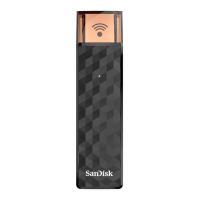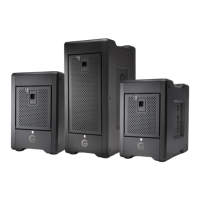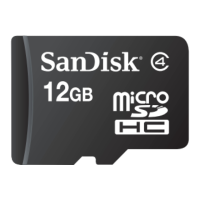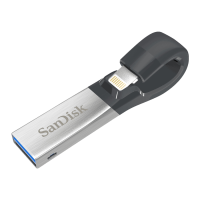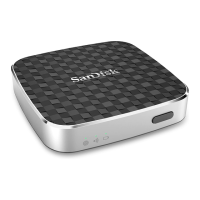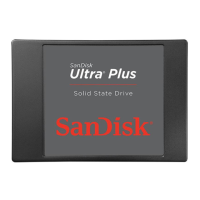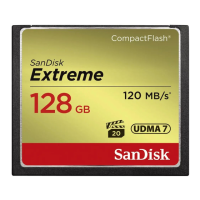Chapter 5 – SPI Protocol
Revision 2.2 SD Card Product Manual
© 2004 SanDisk Corporation 5-19 12/08/04
5.23.4 Data Write
The host may de-select a card (by raising the CS) at any time during the card busy period.
The card will release the DataOut line one clock after the CS going high. To check if the
card is still busy it needs to be re-selected by asserting (set to low) the CS signal. The card
will resume busy signal (pulling DataOut low) one clock after the falling edge of CS.
Device Write Timing
The following figure describes stop transmission operation in Multiple Block Write
transfer. The “busy” may appear within N
BR
clocks after Stop Tran token. If there is no
busy, the host may continue to the next command.
Stop Transmission Timing—Multiple Block Write
5.24 Timing Values
Table 5-5 shows the timing values and definitions.
Table 5-5 Timing Constants Definitions
Value Min. Max. Unit
N
0 --- 8 Clock c
cles
N
1 8 8 Clock c
cles
N
RC
1 --- 8 Clock c
cles
N
C
1 See Note 8 Clock c
cles
N
WR
1 --- 8 Clock c
cles
N
EC
0 --- 8 Clock c
cles
N
DS
0 --- 8 Clock c
cles
N
BR
0 1 8 Clock c
cles
N
CX
0 8 8 Clock c
cles
Note: The maximum read access time is calculated by the host as follows.
N
AC
(max)= 100 ((TAAC * f
PP
) + (100 * NSAC)) ;
f
PP
is the interface clock rate and TAAC & NSAC are given in the CSD Register.
X H H
Z Z H H
H ***************************************
write command
H H H
H H********
X
card resp.
L Z
X
H H H
N
CS
N
CR
CS
Data In
Data Out
H
X H H H H
Z Z H
N
EC
data block
data response
H H HH
L L L LL L L LL L L LL
H
H H H H HH H H H HH
H
H H
busybusy
H
N
WR
N
DS
H H H H
L
H H H
Z
L
1byte
CS
Data In
Data Out
N
EC
data block
H
L
X X H H HH H HH
H H
busybusy
X
N
WR
N
BR
H L L LL L H HL L L L L LL L L LL L L LL LL L
H HH
H
H H
stop tran
token
ZL Z
data resp. busy
H
H
H H H H H
N
DS
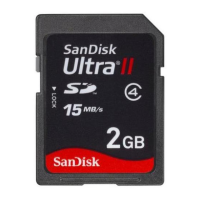
